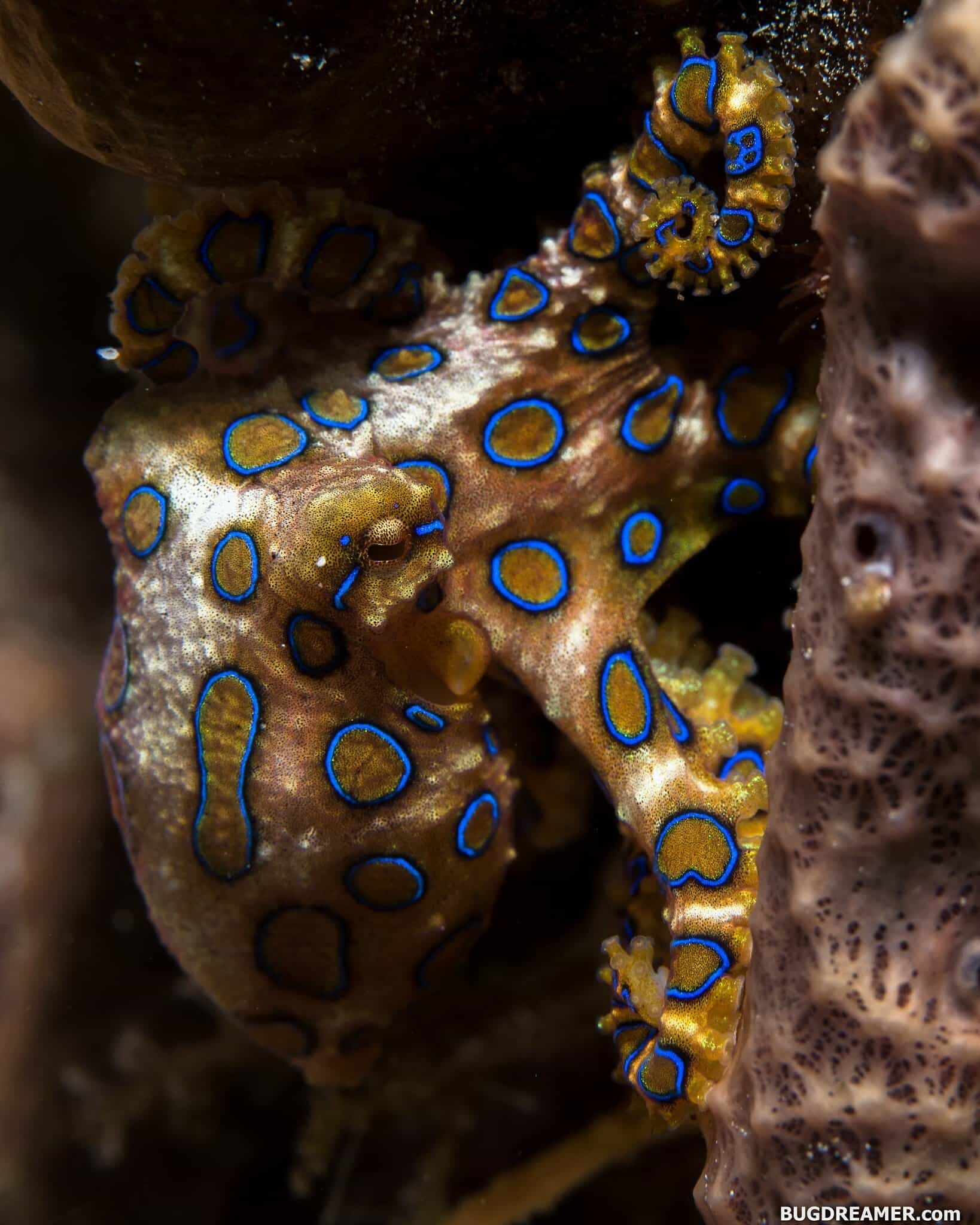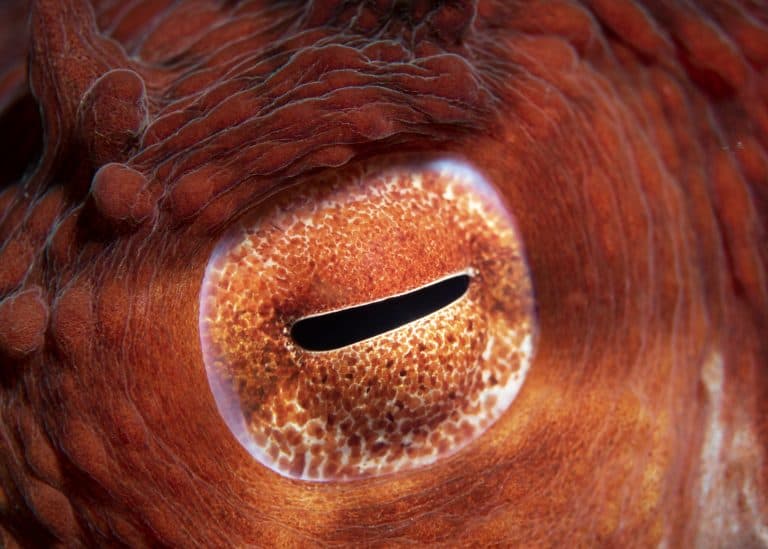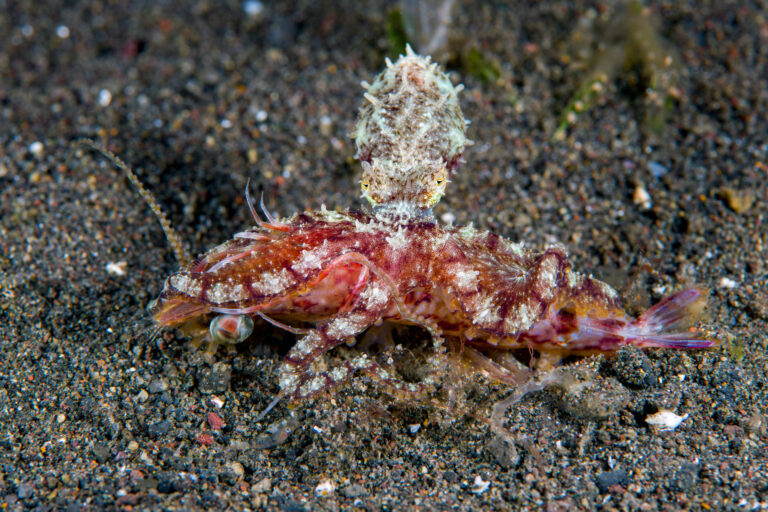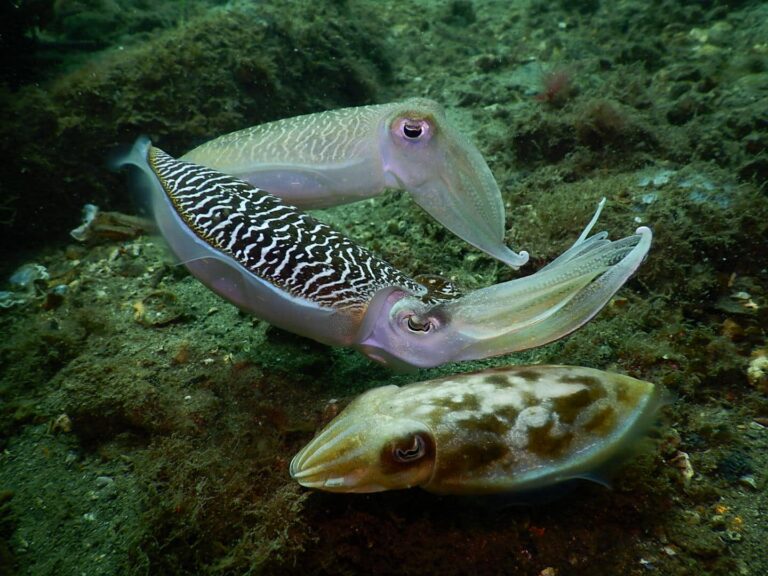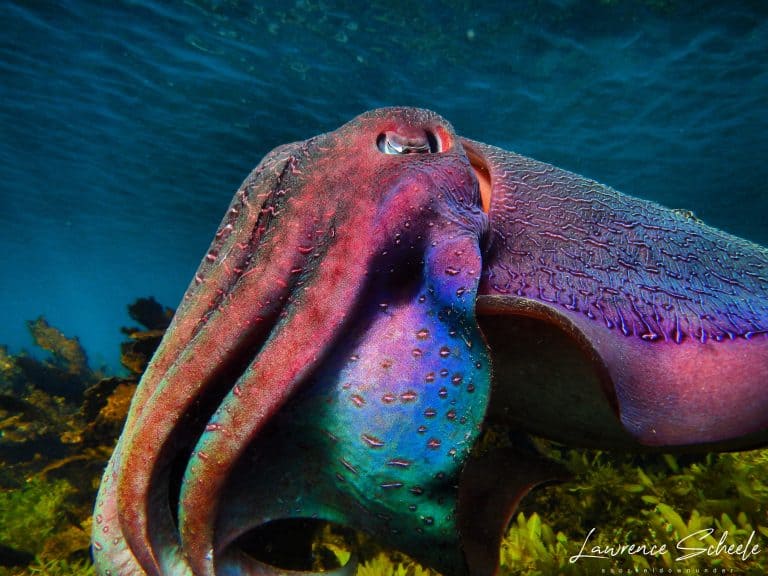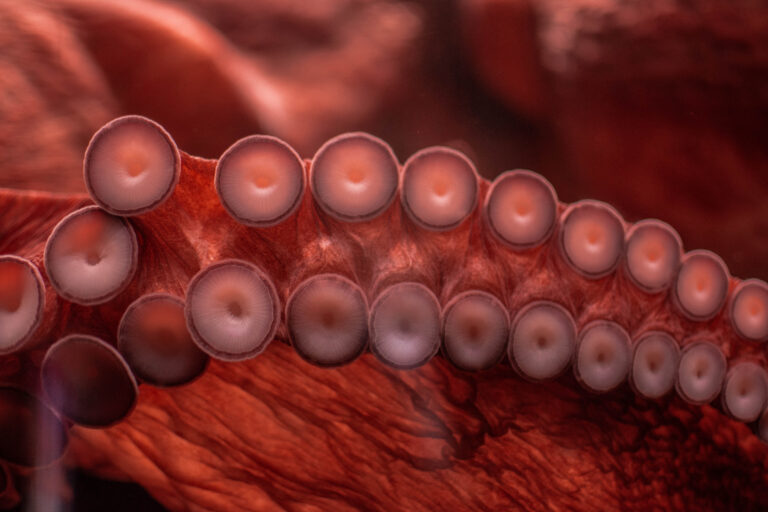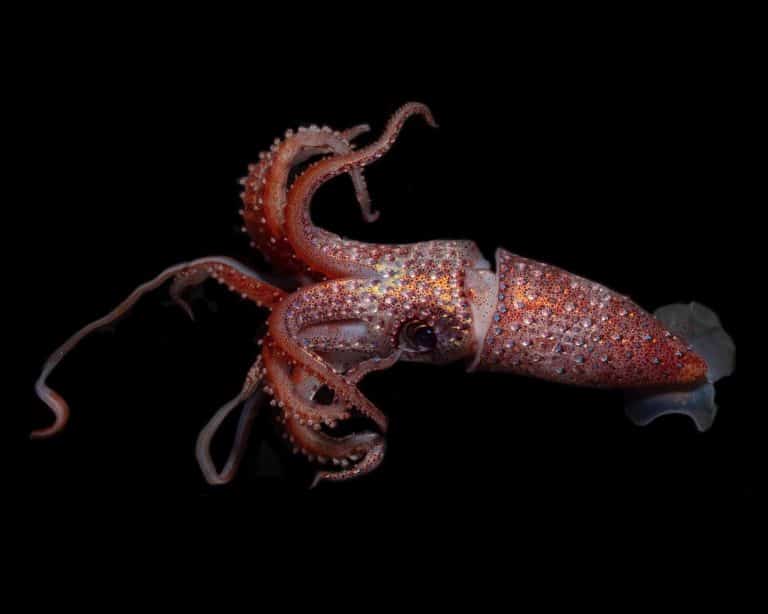5 Blue-Ringed Octopus Facts That’ll Leave You Shook!
Move over great white sharks, the deadliest creature in the ocean is gelatinous, has a beak, and is the size of a golf ball. I present to you the unassuming, but beautifully colored, Blue-Ringed Octopus whose saliva contains a toxin that’s 1,000 times more powerful than cyanide. Let’s take a dive and learn more fun Blue-Ringed Octopus facts!
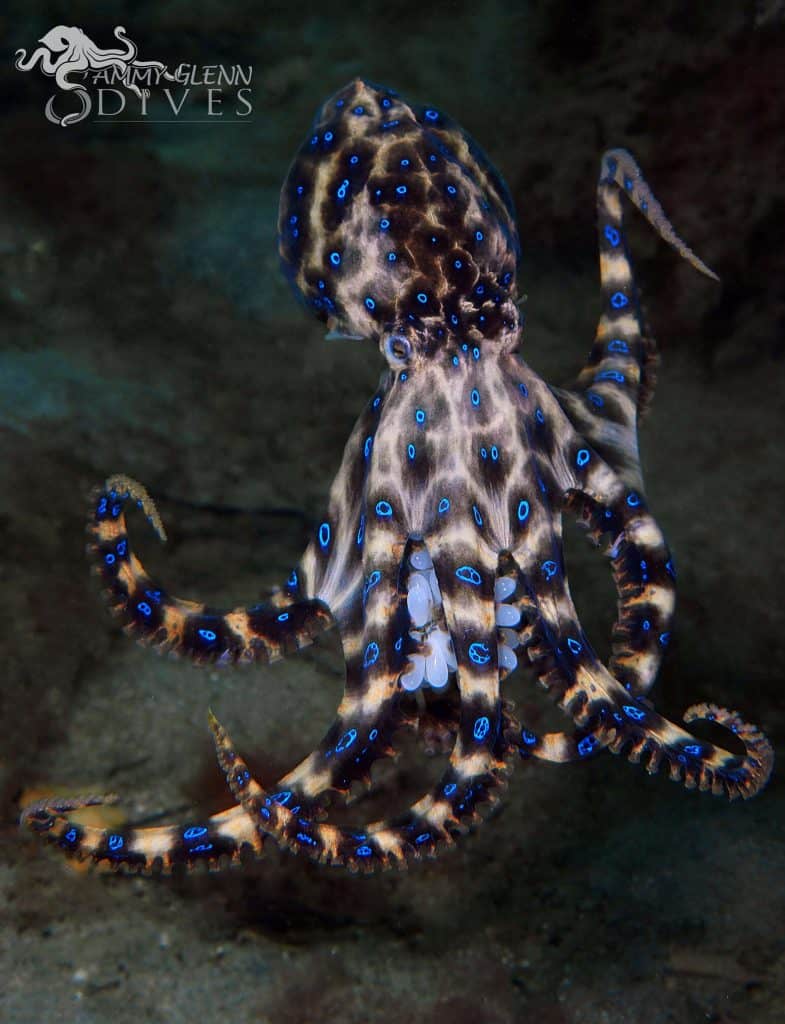
Despite their small size, Blue Ringed Octopuses (Hapalochlaena sp., commonly referred to as BRO’s) are recognized as one of the most venomous animals in the world. There are 3 (and a disputed 4th) species within the family – all recognizable by the 50-60 iridescent blue rings that cover their body and are vividly contrasted on a yellow background.
The only outlier is the Blue-Lined Octopus (Hapalochlaena Fasciata) who has rings on their arms, but lines on their head. They don’t always have this color pattern!
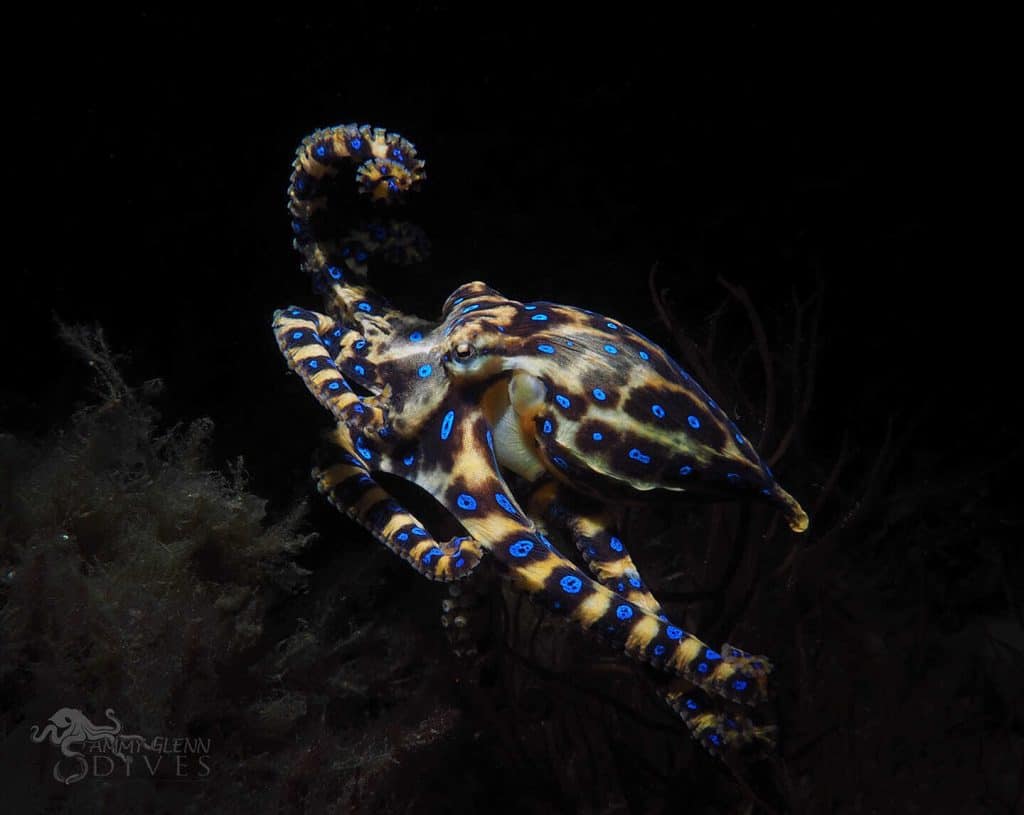
Where To Find The Blue-Ringed Octopus
You will find the Blue-Ringed Octopus in shallow coastal waters of the Indo-Pacific slinking around coral and rocky reefs, seagrass, and algae beds. They feed on small crustaceans including:
- Crabs
- Shrimp
- Hermit Crabs
These tiny octopuses live for about 2 years, mating at the end of their lives. Females will lay 60-100 eggs, which are kept under the female’s arms or in her webbing till they hatch about a month later.
As with many octopus species, the male will die shortly after mating, and the female after her eggs are hatched.
5 Interesting Blue-Ringed Octopus Facts!
With so many of you asking us questions about the Blue-Ringed Octopus on our Facebook and Instagram posts, we wanted to share some more fun facts about this small, but deadly octopus.
‘Try Me If You Dare’ Attitude
A chilled-out, resting BRO is a drab brown or pale color and only turns on its psychedelic pattern when it feels threatened. A “If you try and eat me I will kill you” type of fashion statement.
This type of response is called aposematic behavior when animals flash colors warning predators that if they dare take a bite they won’t live to tell the tale.
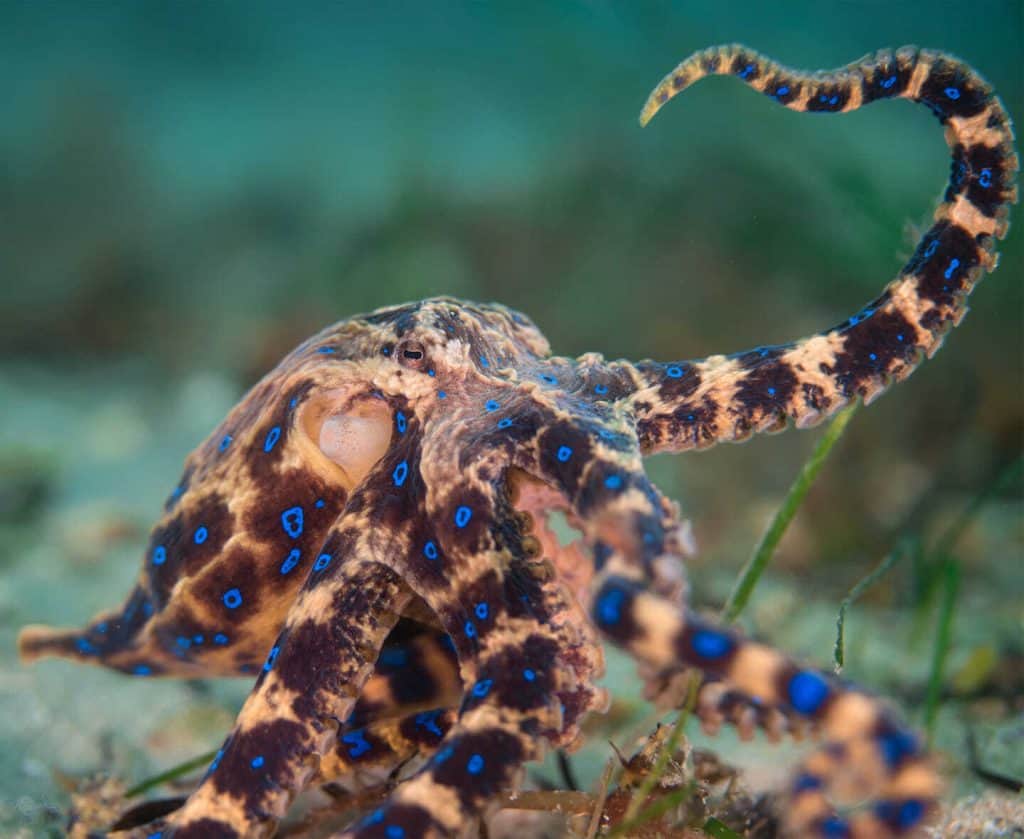
Toxic Like Tetrodotoxin
All species in the Blue-Ringed Octopus family have saliva which contains a powerful neurotoxin, tetrodotoxin (TTX). It is produced by bacteria and is a powerful, fast-acting toxin.
One milligram of TTX can kill a person, making it one of the most known potent natural toxins. To put one milligram in perspective— it’s smaller than the period at the end of this sentence. Relative to other venoms, by weight, tetrodotoxin (TTX) is 10 to 100 times more lethal as black widow venom.
This toxin is also found in:
- Pufferfish
- Moon snails
- Rough-skinned newts
🐙 Octopus Fun Fact
There is no antidote for TTX. Treatment consists of life-supportive measures, including artificial ventilation. So, make sure to respect their space and stay clear!
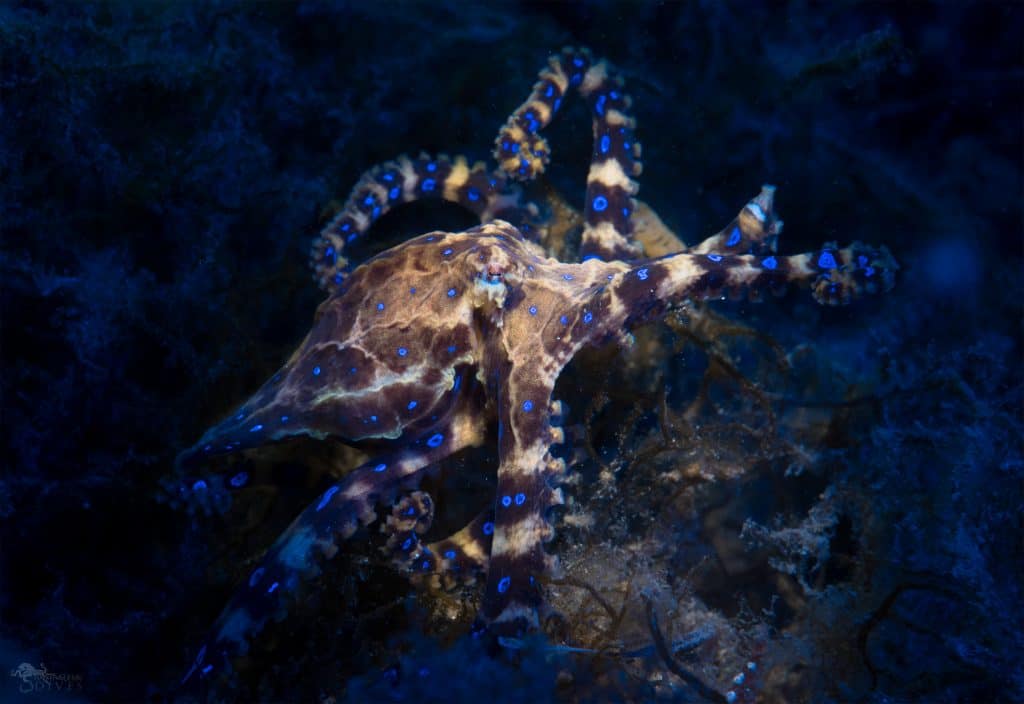
The Bite Of A Blue-Ringed Octopus
The bite has been described as a small laceration with no more than a tiny drop of blood and is usually painless. Even the unnoticeable bite from a Blue Ringed Octopus can shut down the nervous system of a large person or animal in just minutes!
A tiny bite could result in complete:
- Paralysis
- Blindness
- Loss of senses
- Nausea
And, could result in death within minutes!
The toxin goes after your nervous system, blocking nerve signals throughout the body so the first thing you will feel is numbness. Ultimately, it causes complete paralysis of your muscles including the ones that you need to breathe.
Despite its deadly venomous bite, it is one of the most sought-after subjects for scuba divers and underwater photographers.
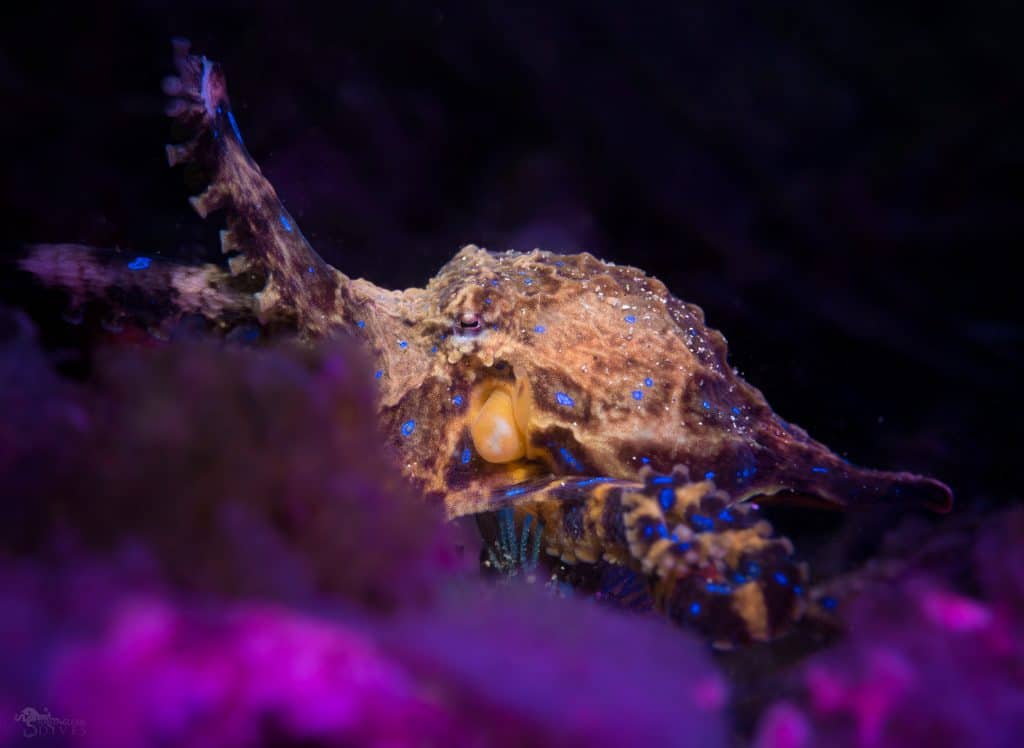
🐙 Octopus Fun Fact
Heads up! ALL octopuses are venomous but only two contain the lethal TTX (the Blue-Ringed Octopus and the Mototi Octopus). Other octopus species use venom made from different compounds but still manage to paralyze the nervous system of their prey while their saliva liquifies/breaks down muscle tissue so they can eat.
Tip: Check out this post to find out more about how octopuses eat!
Look, But Don’t Touch!
As a common courtesy to marine life (and any wildlife for that matter), looking but not touching should be your go-to for any creatures you come across.
This protects both you from getting hurt and the animal from being unnecessarily stressed and put in a position where it feels threatened.
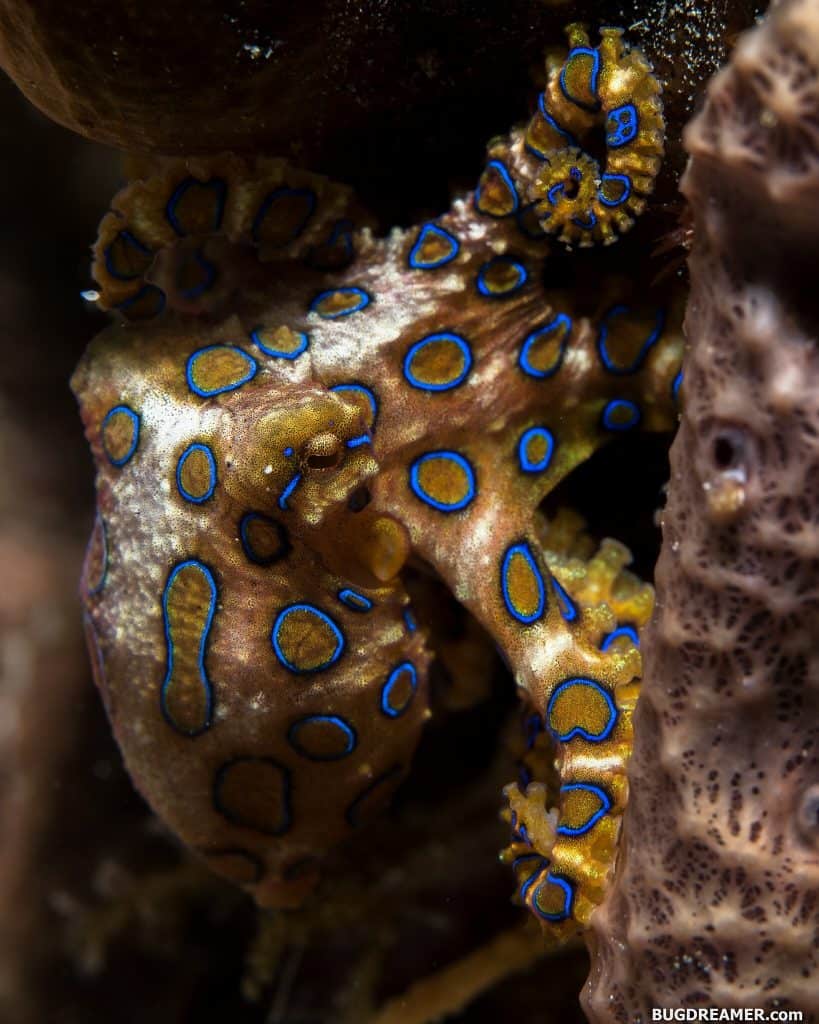
But Wait…There’s Good News!
Okay, so I know that what a bit scary. BUT, here are three pieces of good news to follow the seemingly terrifying information you just learned:
1. The Blue-Ringed Octopus DOES NOT want to hurt you!
They are not hiding out in tidepools waiting to pounce on you. They prefer chilling in their little den, eating crabs, and living that solitary quiet life. This is probably why you rarely hear of anyone dying or getting ‘attacked’ by a Blue-Ringed Octopus.
Lucky for everyone- they mostly bite what they know they can subdue/eat. Since the 1960s, only 3 deaths have been attributed to a Blue-Ringed Octopus!
2. Don’t Wait- Get Medical Attention Right Away.
In the very rare event that you find yourself bitten by a BRO, getting medical attention right away gives you a very good chance of surviving a bite!
While there is no antidote for tetrodotoxin, thankfully there is modern medicine and technology where equipment will breathe for you and medical professionals will keep you alive till your body has metabolized the venom.
According to a report back in 2006, a 4-year-old boy was bitten twice by a Blue-Ringed Octopus while playing on a beach in Australia. Minutes after, he experienced vomiting, lost the ability to stand, and complained of blurred vision. His fast-acting parents got him to medical help within the first 20 minutes where he was intubated and ventilated for 17 hours.
Happily, that boy was fine and had no further complications from the incident, but it’s a good reminder to make sure you know what your kiddos (and yourself) are playing with at the beach.
3. Possibly Using Blue-Ringed Octopus Venom For Good?
Researchers at the University of Melbourne are looking into cephalopod venom and how it could lead to new drug discoveries! Dr. Bryan Fry, a biochemist who studies venom variation in the world, says:
“Venoms are toxic proteins with specialized functions such as paralyzing the nervous system. We hope that understanding the structure and mode of action of venom proteins we can benefit drug design for a range of conditions such as pain management, allergies, and cancer.”
How cool is that!?
The next time you come across the headlines “Octopus venom powerful enough to kill 26 adult humans within minutes”, you can stop the “jaw’s soundtrack” knowing they spend the majority of their lives in a den just chilling and going out to hunt for crabs occasionally.
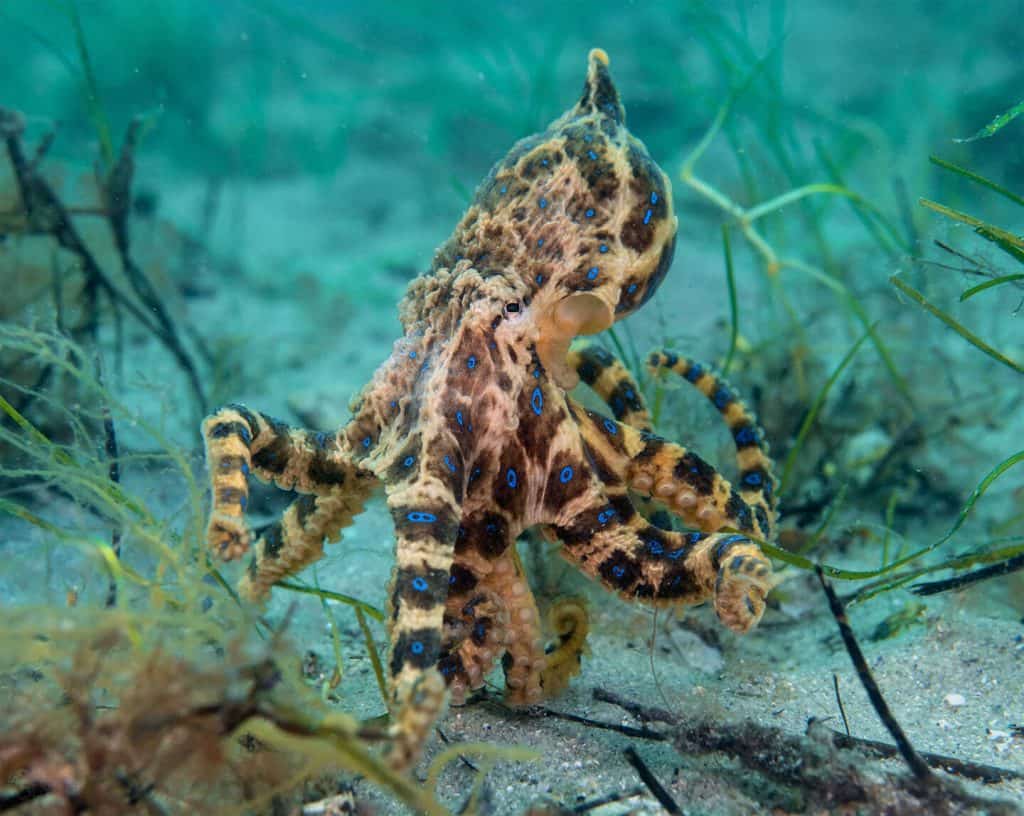
The Blue-Ringed Octopus: Beautiful Yet Toxic!
Did you enjoy learning more Blue-Ringed Octopus facts?
If you want to educate yourself some more about all sorts of different cephalopods, take a look at our encyclopedia. Or, what we call it, our Octopedia!
Connect with other octopus lovers via the OctoNation Facebook group, OctopusFanClub.com! Make sure to follow us on Facebook and Instagram to keep up to date with the conservation, education, and ongoing research of cephalopods.
More Posts To Read:
If you enjoyed learning about the Blue-Ringed Octopus, we recommend taking a look at some of these other profiles:
- Maori Octopus Facts: One Of New Zealand’s Largest Species!
- 5 Awesome Dumbo Octopus Facts (The Cutest Octopus Ever!)
- 7 Fun Facts About The Majestic Mimic Octopus!
- Tiny Hairy Octopus: The Cutest Species You’ve NEVER Heard Of!
- 9 Giant Pacific Octopus Facts That Will Blow Your Mind
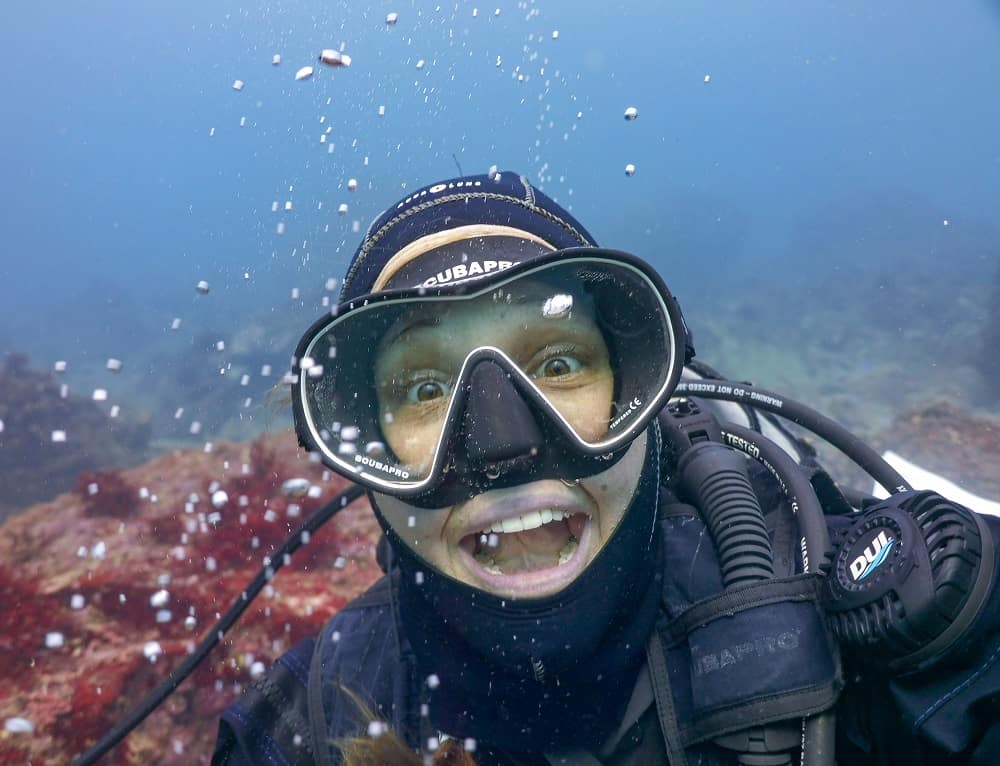
Corinne is a biologist with 10 years of experience in the fields of marine and wildlife biology. She has a Master’s degree in marine science from the University of Auckland and throughout her career has worked on multiple international marine conservation projects as an environmental consultant. She is an avid scuba diver, underwater photographer, and loves to share random facts about sea creatures with anyone who will listen. Based in Japan, Corinne currently works in medical research and scientific freelance writing!
